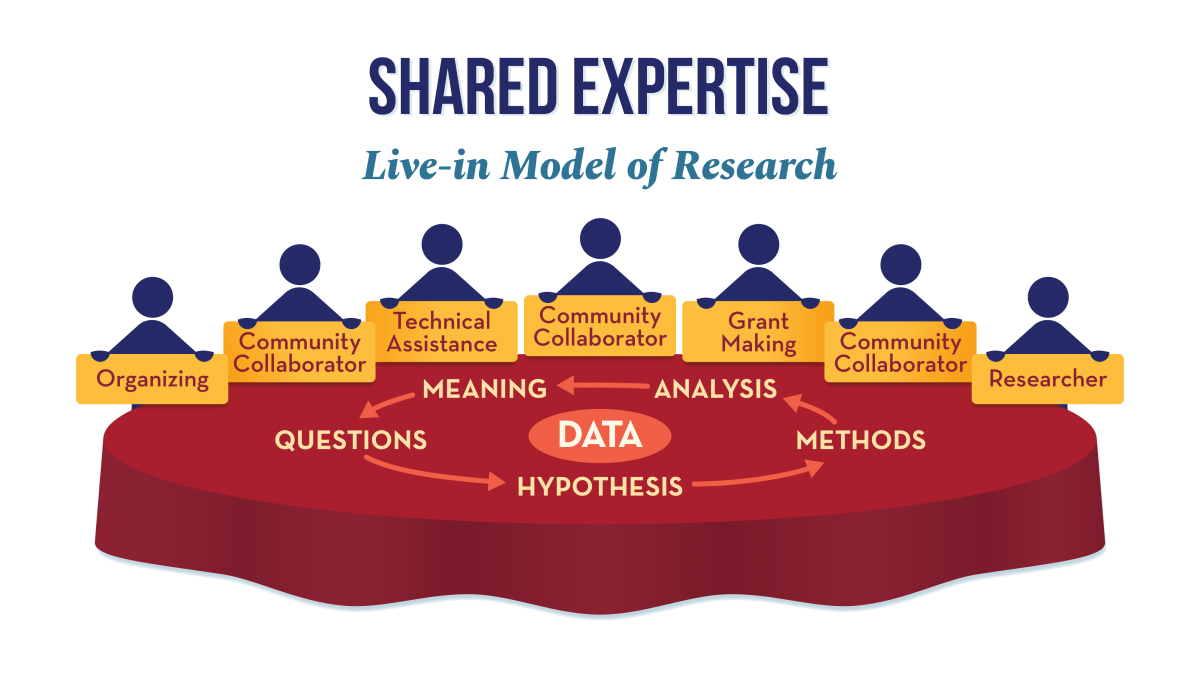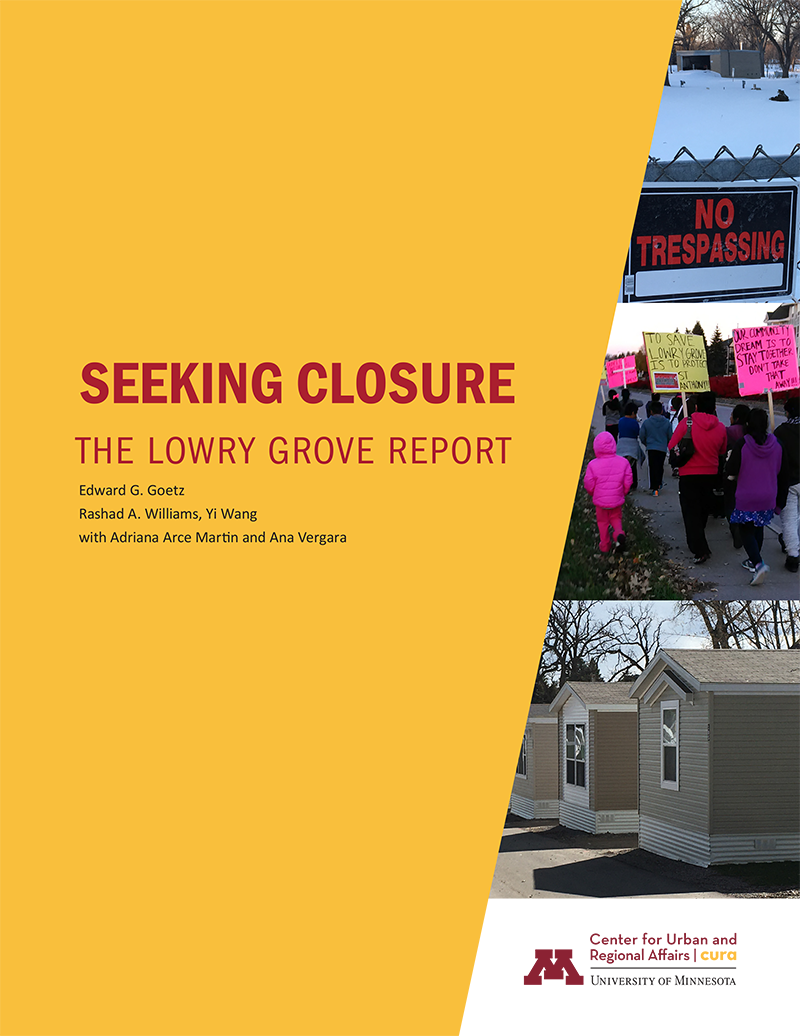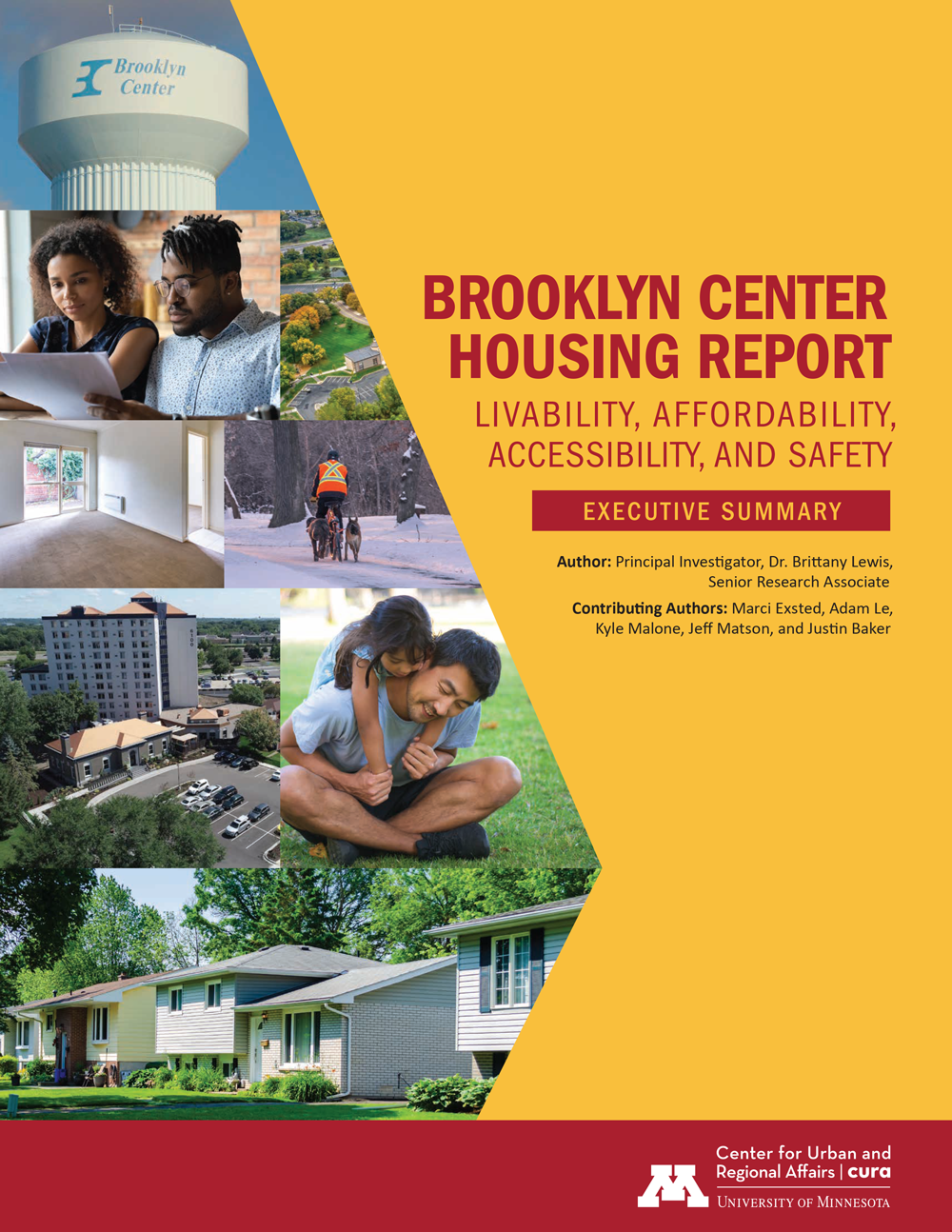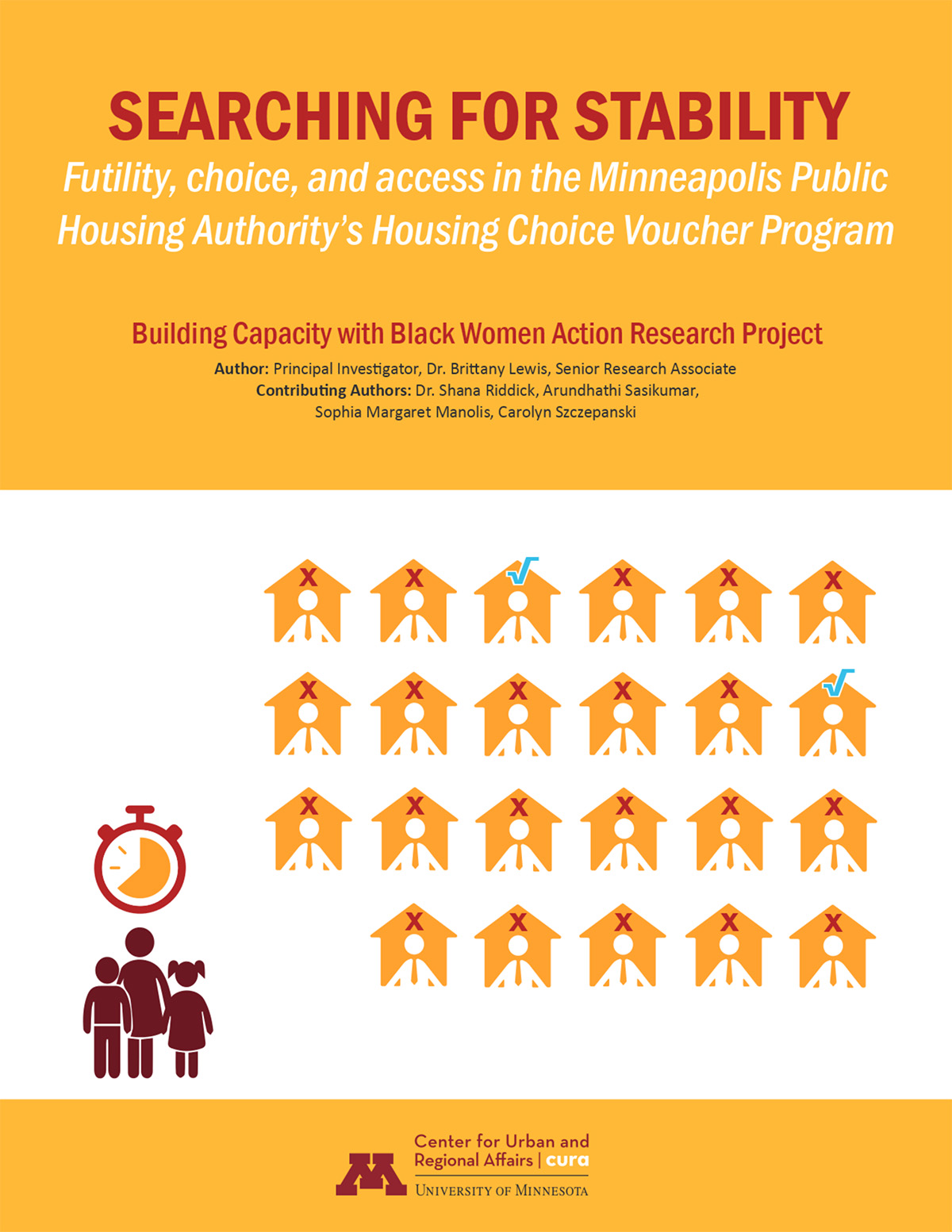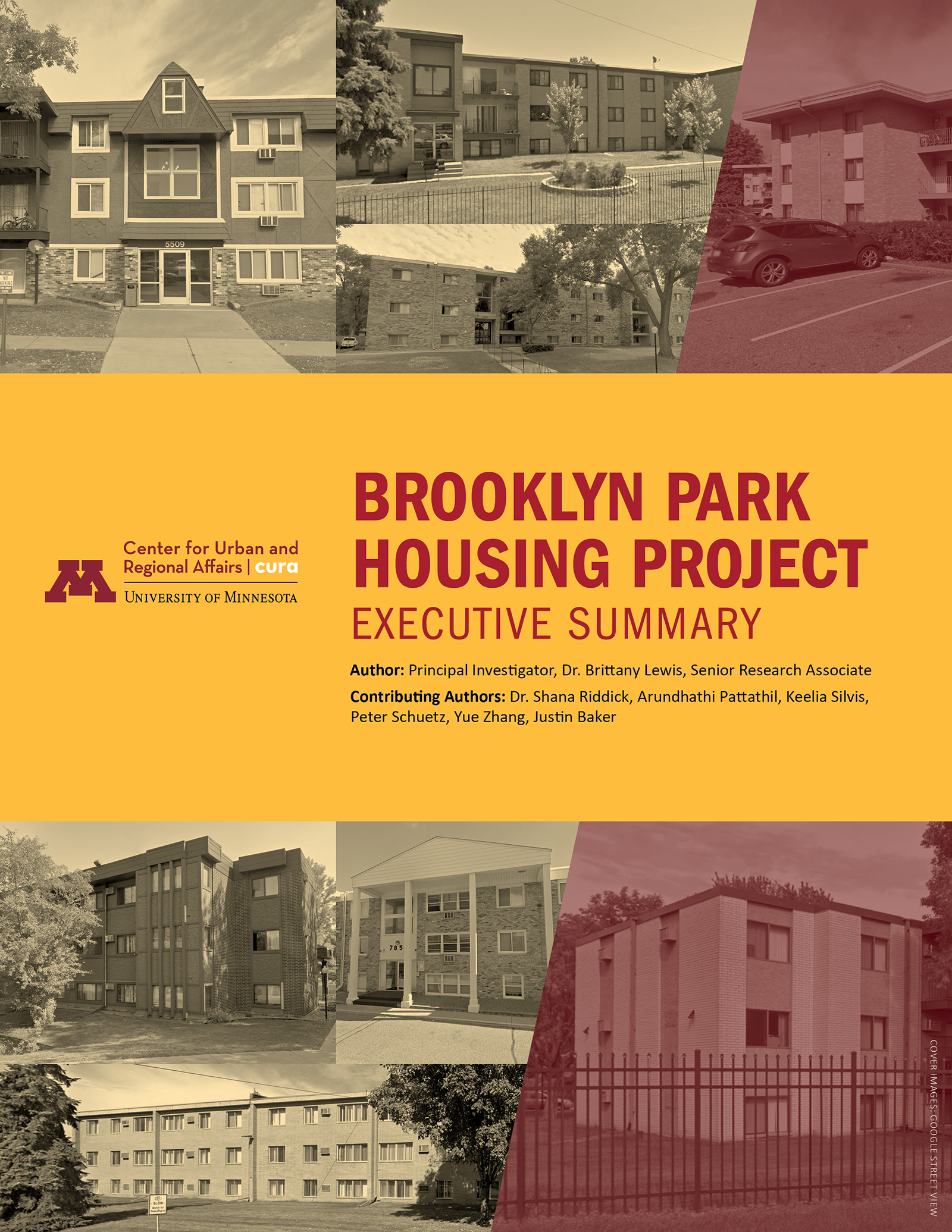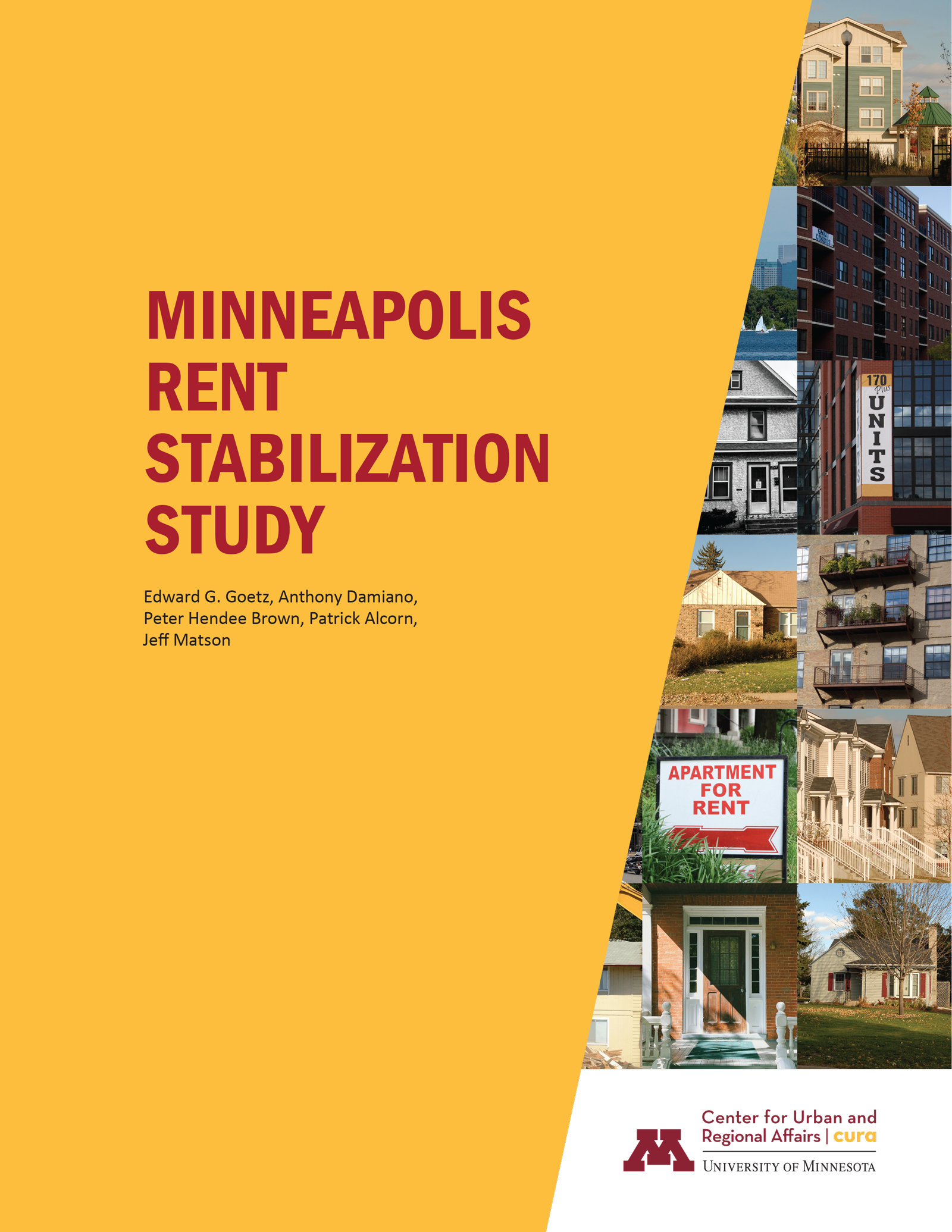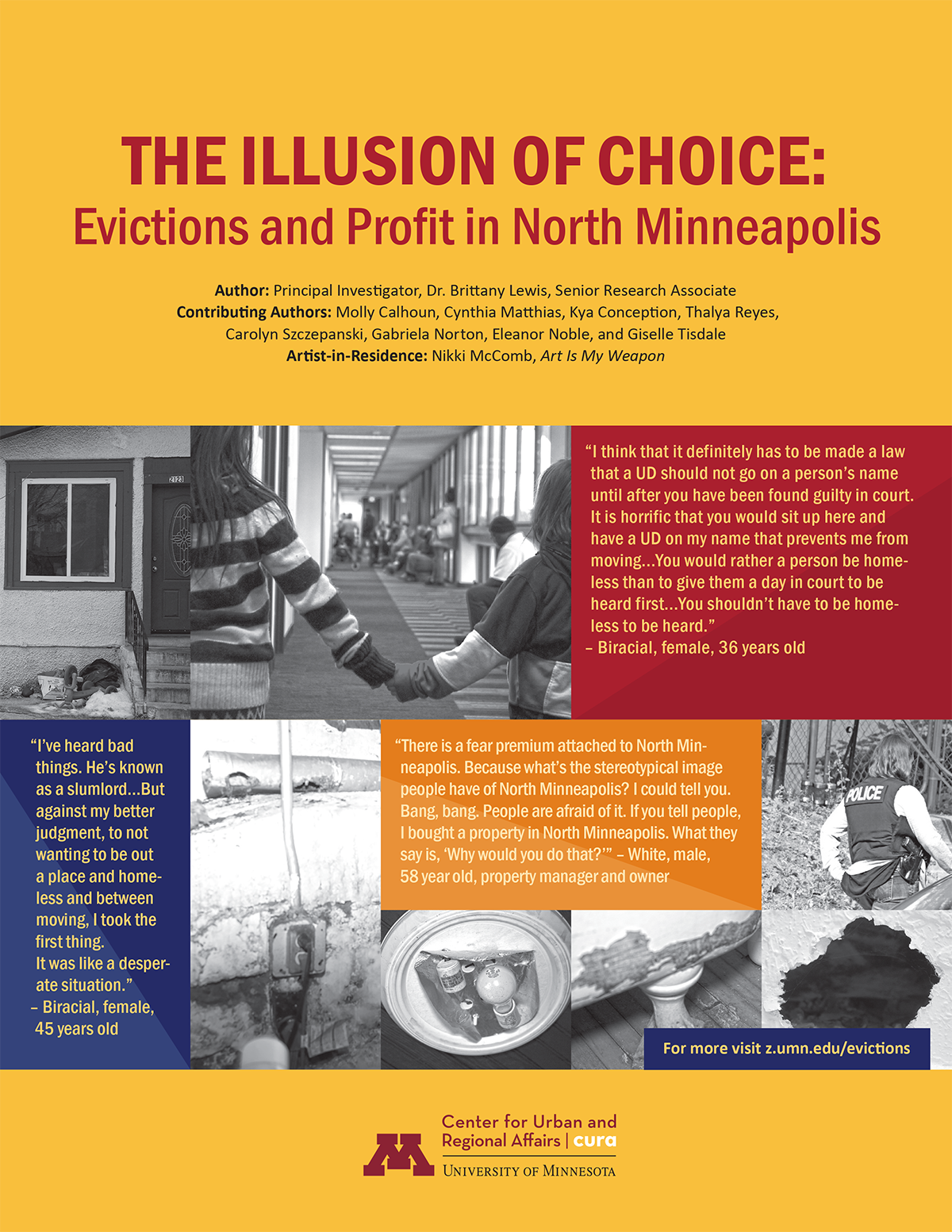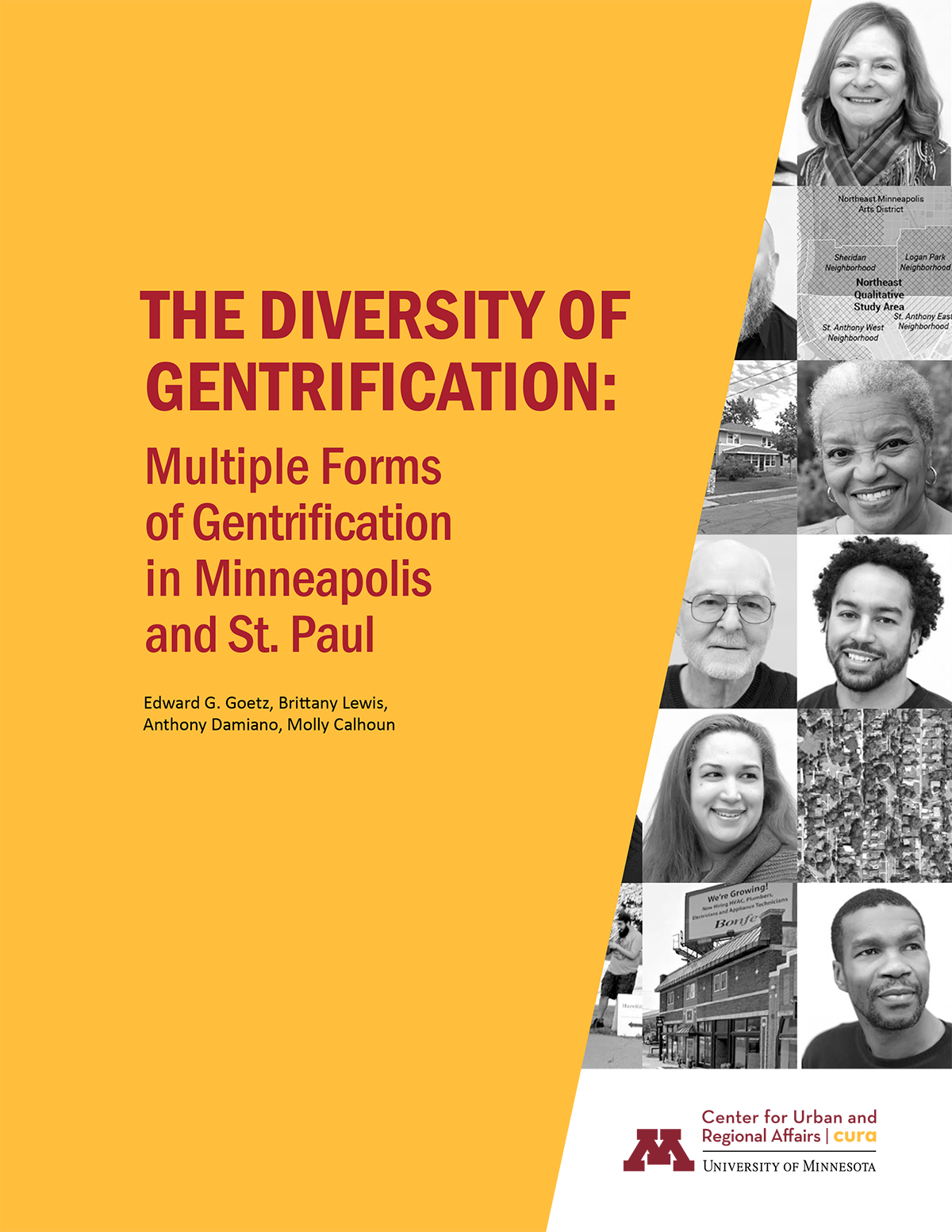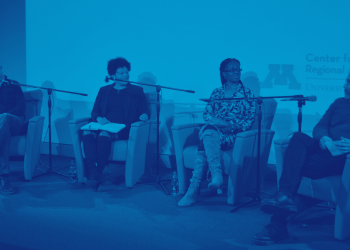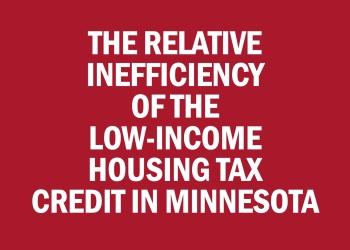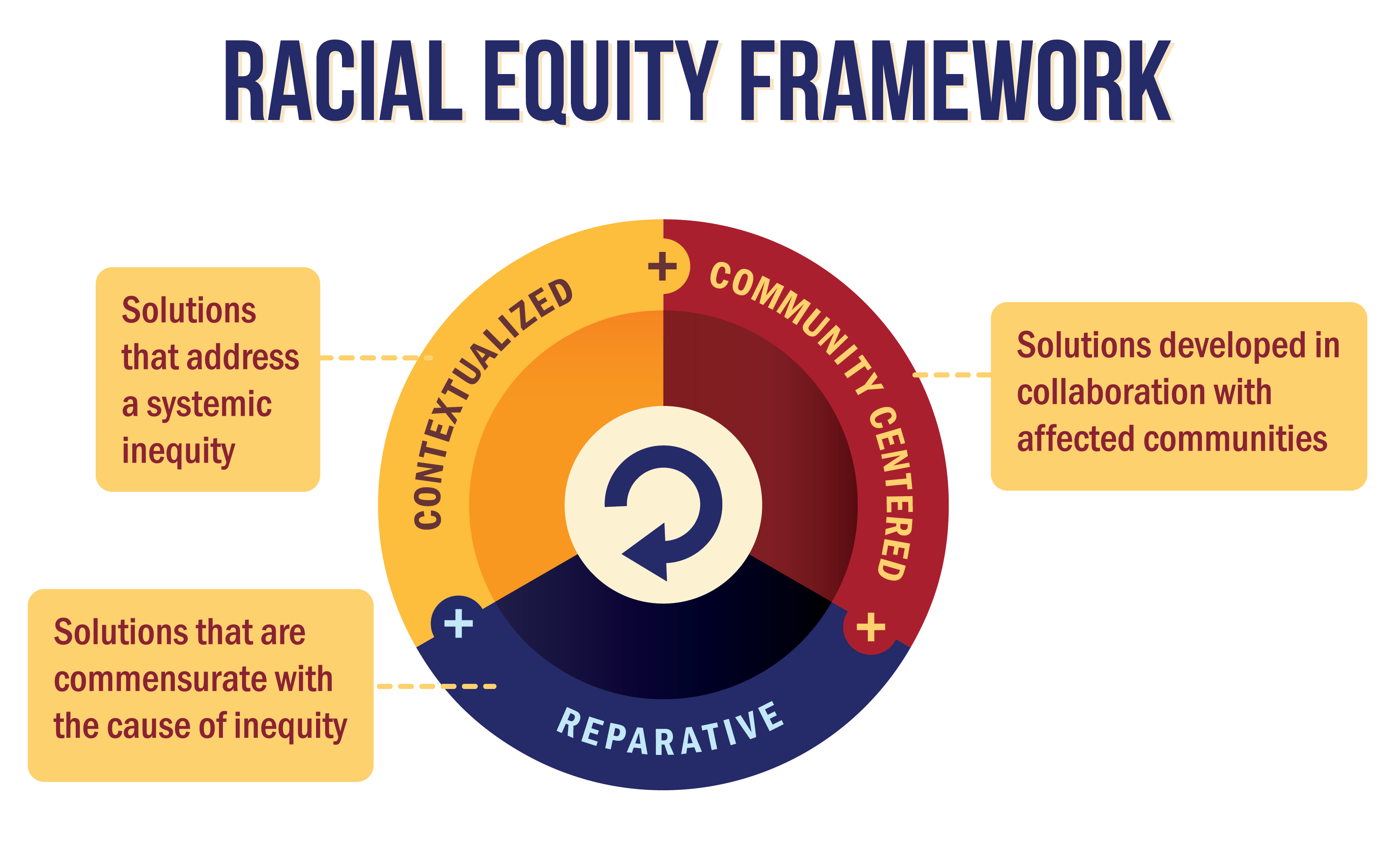
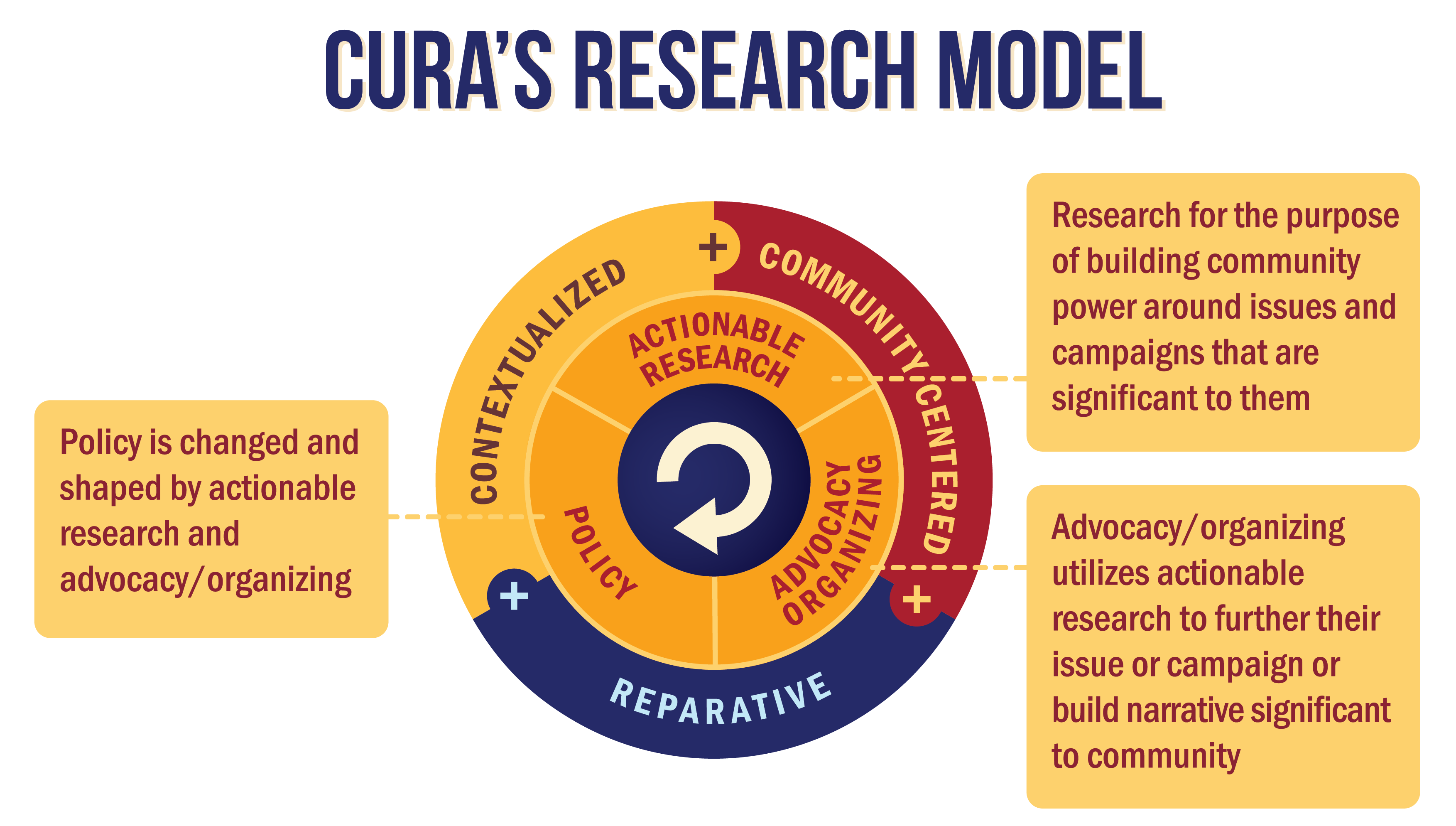
There is power in defining research questions and in controlling the production of knowledge. When research is done in communities of color and low-wealth communities, a power imbalance often exists between researchers and community-based organizations.
CURA's community-based research model is aimed at reordering that power relationship.
Community-based research values community knowledge and people’s lived experiences. It reflects meaningful collaboration between academics, advocates, service providers, and impacted communities. It leads to more robust and holistic data, more effective policy solutions, and stronger community action. When we use a community-based research model, community members are not the subjects of research—they are the co-producers of knowledge.
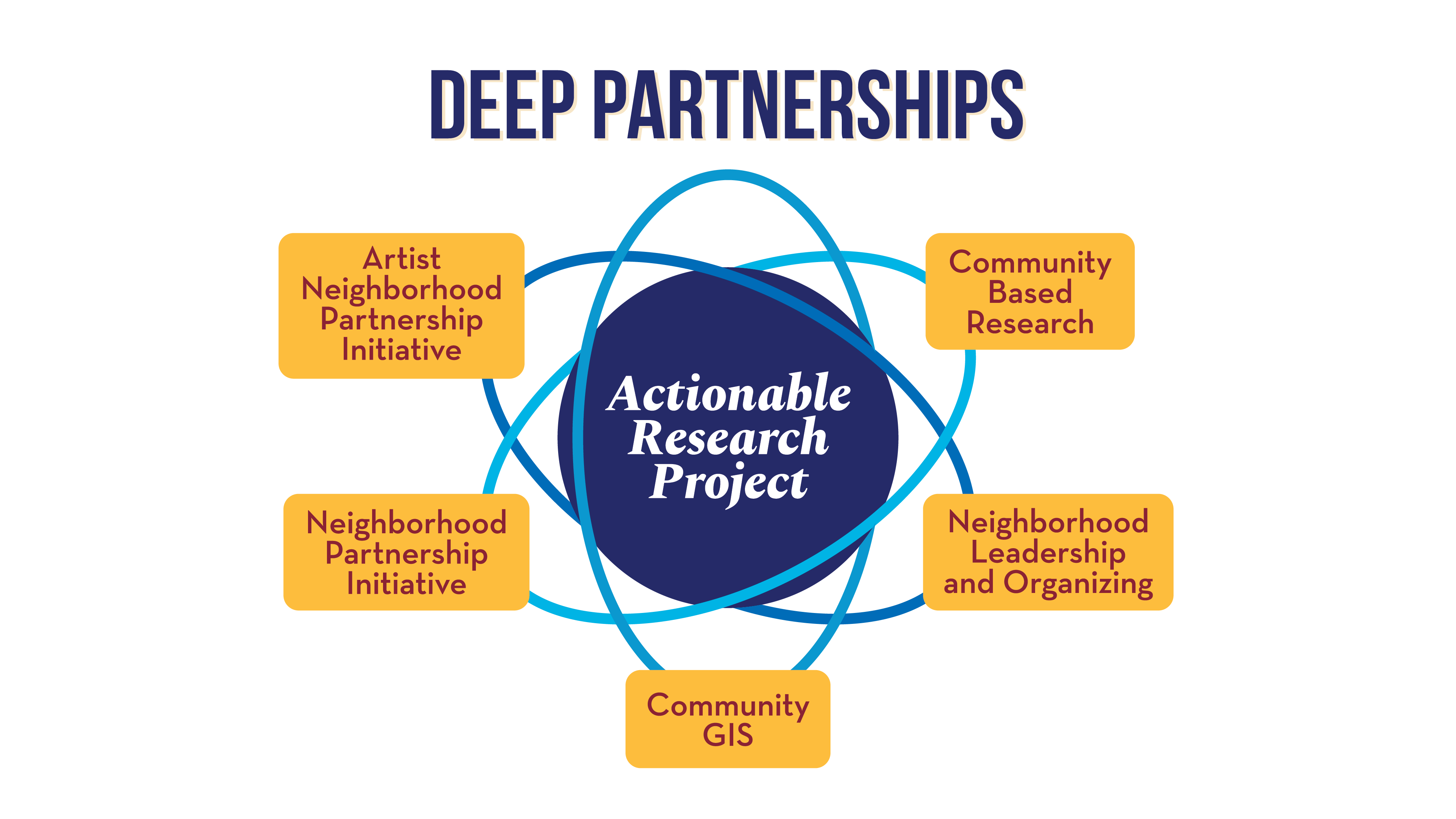

CURA works with community partners to conduct large-scale, comprehensive community-based research projects. Key elements of our model include:
- Deep partnership and open process: Research ideas come from deep relationships with community partners. We work together for as long as needed to shape a project, including its key questions and goals.
- Shared expertise: Community members and CURA researchers provide important expertise and unique perspectives.
- Racial equity framework: Projects align with CURA’s racial equity framework. They are contextualized, community-centered, and reparative.
- Actionable: The purpose of research is to build community power, further campaigns or build narratives, and change policies.
Recent large-scale CURA Research projects
Seeking Closure: The Lowry Grove Report
In June 2016, the long-time owner of the Lowry Grove manufactured home park in St. Anthony, MN, sold the park to a private developer. Lowry Grove was home to 95 lower-income households, elders living on fixed incomes, and younger immigrant families. Residents fought to keep the park open, but they were displaced in June 2017. CURA worked with resident organizers to design a study that would assess the impacts of the park closure and relocation on the residents, and examine the events that led to the closure of the park. CURA researchers conducted in-depth interviews with more than 50 households, activists, and professionals.
Brooklyn Center Housing Report: Livability, affordability, accessibility, and safety
Brooklyn Center, Minnesota is a growing community and one of the most diverse suburbs in the Twin Cities metro area. Like many growing metropolitan locales, they face the challenge of providing current and future residents with stable, accessible housing options, while actively addressing issues of growing gentrification and affordability concerns. To help address these emerging issues, the city reached out to the Center for Urban and Regional Affairs (CURA) to design a study that would aid their urban planning efforts and begin to head off current and future housing concerns.
Searching for Stability: Futility, choice, and access in the Minneapolis Public Housing Authority’s Housing Choice Voucher Program
In 2019, under the leadership of Dr. Brittany Lewis, the Center for Urban and Regional Affairs (CURA) worked to build and facilitate an inclusive participatory action research process that provided 10 low-income Black women in Minnesota, the time, space, and tools needed to resume conscious control over their own housing stability. The project aims to support Black women, who are disproportionately affected by the nationwide evictions crisis. Through strategic support, this research project allowed them to be co-collaborators in an action research project of their choosing. This brief report provides a detailed account of the action research project the cohort took on, emphasizing project findings and recommendations.
The Brooklyn Park Housing Project
The Brooklyn Park Housing Project aims to better understand housing instability and quality of life in a select number of Brooklyn Park apartment communities for the purpose of producing tangible policy and practice recommendations that produce equitable outcomes.
Minneapolis Rent Stabilization Study
In Spring 2021, a team of CURA researchers produced a study of the potential impacts of a rent stabilization policy for the City of Minneapolis. The study examined market trends and existing conditions in the city’s rental housing stock, population and income trends over the past 20 years, and the city’s rent affordability gap. The CURA team also produced an analysis of the potential impact of different rent ceilings on returns to investment for investors, developers, and owners, and a summary of the experience of other cities who have enacted rent stabilization. The research team was led by CURA Director Edward G. Goetz, and included Anthony Damiano, Jeff Matson, Peter Brown, and Patrick Alcorn.
In November of 2021, question number 3 “Authorizing City Council To Enact Rent Control Ordinance” will be on the ballot for Minneapolis voters. In advance of the election, CURA built a version of the study with a high-level executive summary and conclusion and also expanded infographics, charts, maps, tables and graphs.
The Illusion of Choice: Evictions and Profit in North Minneapolis
In May of 2019, the Center for Urban and Regional Affairs (CURA) held a multimedia release event for “The Illusion of Choice: Evictions and Profit in North Minneapolis” research project that included a presentation, a video telling the stories of tenants and landlords in North Minneapolis, an art installation with photos that explore the phases of eviction, and an illustrative simulation developed with the Juxta Art Youth Participatory Action Research (YPAR) team called the “Social Service Runaround.” Evictions are a social crisis in North Minneapolis caused by decades of housing discrimination, urban disinvestment, and unfair lending practices. This research project went beyond the data to tell the story of the evictions crisis through qualitative research interviews with both North Minneapolis landlords and tenants.
The Diversity of Gentrification: Multiple Forms of Gentrification in Minneapolis and St. Paul
In January of 2019, the Center for Urban and Regional Affairs (CURA) released its study of gentrification in Minneapolis and St. Paul between 2000 and 2015. “The Diversity of Gentrification: Multiple Forms of Gentrification in Minneapolis and St. Paul” used a mixed methods approach that combined a statistical analysis of neighborhood-level data with an in-depth qualitative analysis of interviews with public officials, community leaders, and neighborhood residents. The study found significant evidence of gentrification in the two cities.
